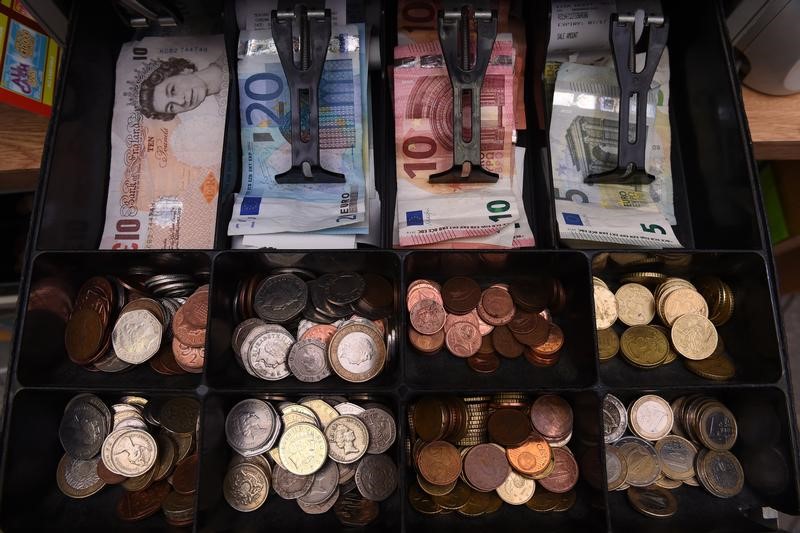By Claire Ruckin and Hannah Brenton
(Reuters) - A range of strategies are emerging among proliferating European direct lending funds, as the booming sector matures, that could either help or hinder banks as competition for profitable leveraged finance business heats up.
Direct lending funds are expected to complete €13bn of deals this year, according to Deloitte, and have financial firepower of around US$54bn at their disposal, according to data and intelligence provider Preqin, as the market assesses its relationship with banks and targets a wider range of deals.
“In one sense, banks see some competition from direct lenders but then on the other hand, there can be useful collaboration dynamics,” a senior leveraged banker said.
In the past five years, direct lending has evolved from a smattering of unitranche funds trying to plug a gap in 2009 and 2010 created by banks’ retreat from the market after the financial crisis to a diverse market with around 60 European direct lenders, according to Deloitte.
Direct lenders are now running funds with strategies ranging from senior debt funds to unitranche lending, which remained a viable standalone product even after banks became better capitalized in 2013–2014.
At €13bn, direct lending is around 10% of the size of Europe’s leveraged loan market, which has completed US$139bn of loans in 2016 so far, according to Thomson Reuters LPC data. Many funds are now pursuing pan-European strategies as they diversify away from the UK, which was initially the biggest direct lending market.
Pemberton, the asset management group backed by Legal & General, raised a €1.2bn European Mid-Market Debt Fund in November, which provides senior debt financing to European mid-market borrowers with turnovers between €75m and €1bn and has already deployed 46% of the fund in 13 companies across the UK, France, Germany, Italy and Spain.
KKR (N:KKR) recently closed two direct lending deals that will give more than US$275m in financing to Dutch holiday parks operator Roompot and UK outdoor advertising company Exterion Media. Roompot’s financing was one of the largest unitranche financings completed in the Netherlands.
INSTITUTIONAL GROWTH
The rise of direct lending is helping the diversification of Europe’s institutional investor base, but the breakneck pace of development is resulting in some confusion between direct lenders and banks about whether they are collaborating or competing.
While most direct lenders are middle market specialists, up to 10 funds are able to make bigger commitments of up to €100m on a standalone basis or in conjunction with other direct lenders, investors said.
Some of the larger direct lending funds are competing against banks for mandates and are winning deals at the top end of the market as well as in the mid-market space.
“We have won deals where we were competing against banks but we have also recently done deals where we have worked alongside banks,” Jean-Baptiste Feat, co-head of private debt at Tikehau Capital said.
GSO Capital Partners completed the largest ever European unitranche deal in May, which totaled €625m and backed the merger of Investindustrial-owned Italian chemicals company Polynt and its US peer Reichhold
“In one of our home markets we were supposed to sign and underwrite a deal and we found at the last minute it was taken by a direct lender,” a leveraged banker said.
A direct lender, thought to be Ares, has offered to provide £850m as a unitranche loan to back a potential sale of self catering holiday park operator Parkdean, a banking source said.
Other direct lenders are collaborating with banks, either independently or in formal or informal partnerships, to access banks’ dealflow as competition for paper remains fierce in Europe’s highly liquid leveraged loan markets.
Direct lenders can help banks to arrange loans that they would otherwise be unable to underwrite due to issues with borrowers, currency concerns or capital restraints. Collaborating allows some banks to make smaller commitments in less risky parts of the capital structure without losing a client.
“We have done three or four transactions this year where we had less appetite to underwrite sterling or dollars and direct lenders came in and underwrote the whole tranche with a backstop facility, which was quite helpful,” the leveraged banker said.
On some deals, banks provide amortizing debt and direct lenders, including Tikehau, provide bullet tranches, which complements their different appetites.
“For banks it is unusual but once they have done it and are happy with the outcome, they are trying to replicate the structure on other deals.” Tikehau’s Feat said.
CORPORATE GROWTH?
With around US$54bn of capital to invest, direct lenders are targeting privately owned leveraged companies that are not backed by private equity companies as a growth area, along with strategic financing and asset-backed lending.
“Corporate borrowers are more open to the different options available to them, often informed by accountancy and advisory firms or even banks saying they should consider direct lenders,” said Pemberton senior portfolio manager Mark Hickey.
CVC Credit Partners (UL:CVC) and EQT’s Mid-Market Credit Fund’s European Private Debt businesses recently teamed up to provide a £110m unitranche facility to privately owned merchant services provider Paymentsense.

“Paymentsense … exemplifies how non-sponsor backed companies can also avail of private debt capital to support their growth aspirations with tailored and flexible financing packages.” said Andrew Cleland-Bogle, director in EQT’s credit team and investment adviser to EQT’s Mid-Market Credit Fund.